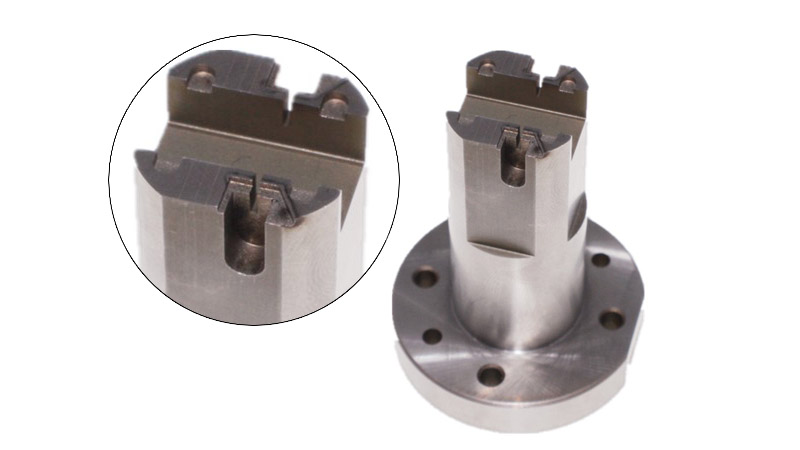If you are looking for a high-performance material that combines excellent hardness, wear resistance, and dimensional stability, SKD11 is undoubtedly your best choice. SKD11 has gained widespread recognition among customers for applications such as molds and punches that require long-term wear resistance and repeated loading.
This high-carbon, high-chromium, cold-work tool steel is renowned for its exceptional wear resistance, high hardness, and good dimensional stability after heat treatment. Known under the Japanese Industrial Standards (JIS) designation, SKD11 is internationally recognized and widely used.
For engineers, toolmakers, and machinists, a thorough understanding of SKD11 is essential to unlocking its full potential. This guide provides a detailed look at its properties, a step-by-step heat treatment process, and practical advice for machining this formidable material.
1. Core Properties of SKD11 Tool Steel
The performance of SKD11 is a direct result of its carefully balanced chemical composition, which is rich in carbon and chromium.
Chemical Composition (Typical):
- Carbon (C): 1.40% – 1.60%
- Chromium (Cr): 11.00% – 13.00%
- Molybdenum (Mo): 0.80% – 1.20%
- Vanadium (V): 0.20% – 0.50%
- Silicon (Si): ≤ 0.40%
- Manganese (Mn): ≤ 0.60%
This composition creates a microstructure dense with large, chromium-rich carbides, which is the key to its signature properties.
Key Mechanical Properties:
- Exceptional Wear Resistance:
This is the primary attribute of SKD11. The high volume of hard chromium carbides in the steel matrix provides outstanding resistance to abrasive and adhesive wear, making it ideal for high-volume stamping and forming operations.
- High Compressive Strength and Hardness:
After proper heat treatment, SKD11 can achieve a hardness of 58-62 HRC. This allows it to withstand immense pressures in tooling applications without deforming or dulling.
- Good Toughness:
While its high hardness means it is not as tough as lower-alloy steels, SKD11 offers sufficient toughness for most cold-work applications, resisting chipping and cracking under typical impact loads.
- Excellent Dimensional Stability:
As an air-hardening steel, SKD11 experiences minimal distortion during the quenching process compared to oil- or water-hardening steels. This predictability is crucial for maintaining tight tolerances in complex dies and tools.
2. The Complete Heat Treatment Cycle
Heat treatment is the critical process that transforms SKD11 from a soft, machinable material into a hard, wear-resistant tool. The process must be followed meticulously.
A. Annealing
Parts are typically supplied in a spheroidized annealed condition (approx. 255 HB max), which is optimal for machining. If re-annealing is required after heavy machining or forging, the following process is used:
- Heat Slowly: Heat the steel uniformly in a controlled furnace to 850 – 870°C (1560 – 1600°F).
- Soak: Hold at this temperature for approximately 1 hour per inch (25mm) of thickness.
- Cool Slowly: Cool very slowly inside the furnace at a rate of 10-20°C (20-40°F) per hour until the temperature reaches 650°C (1200°F). After this, the part can be air-cooled.
B. Stress Relieving
To relieve internal stresses induced by heavy machining and prevent distortion during subsequent hardening, a stress-relieving cycle is recommended.
- Heat Gently: Heat the part to 650 – 675°C (1200 – 1250°F).
- Soak: Hold for 1 hour per inch (25mm) of thickness.
- Cool: Allow the part to air cool slowly.
C. Hardening (Austenitizing)
This is the process of heating the steel to transform its crystal structure.
- Preheat: To minimize thermal shock and ensure uniform heating, preheat the part in two stages: first to 650-750°C (1200-1380°F), then increase to 850-900°C (1560-1650°F).
- Austenitize: Heat to the final hardening temperature of 1000 – 1040°C (1830 – 1900°F). The exact temperature depends on the desired final hardness.
- Soak: Hold at the austenitizing temperature for 20-45 minutes.
D. Quenching
SKD11 is an air-hardening steel, which is its key advantage for dimensional stability.
- Air Quench: Remove the part from the furnace and cool it in still or gently circulating air. For larger or more complex sections, a pressurized gas quench (e.g., nitrogen) can be used to increase the cooling rate.
- Oil Quench (Alternative): In some cases, a warm oil quench can be used for thicker sections to ensure full hardness is achieved, though this increases the risk of distortion.
E. Tempering
Quenching leaves the steel extremely hard but also very brittle. Tempering is essential to reduce this brittleness and impart the necessary toughness.
- Temper Immediately: Tempering must be done as soon as the part has cooled to handling temperature (around 50-70°C or 125-150°F) to avoid the risk of quench cracking.
- Heat to Temperature: Heat the part to the desired tempering temperature, typically between 150°C and 550°C (300°F and 1020°F). The final hardness is a direct result of the tempering temperature—a lower temperature yields higher hardness but lower toughness, and vice versa. A common target for cutting and punching dies is around 200-250°C (400-480°F) to achieve ~60 HRC.
- Soak and Double Temper: Soak for at least 2 hours. For SKD11, a double temper is highly recommended. Cool the part to room temperature after the first temper, then repeat the process for a second time to ensure the conversion of any retained austenite, which improves dimensional stability and toughness.

3. A Guide to Machining SKD11
Machining SKD11 presents a challenge due to its inherent toughness and abrasiveness, even in the annealed state.
Machining in the Annealed State:
Use Robust Tooling:
Solid carbide end mills with modern coatings (like AlTiN or TiSiN) are essential. For turning, use tough carbide grades for inserts.
Low Speeds, High Feeds:
The key is to use lower cutting speeds (SFM/m/min) compared to low-alloy steels, but maintain a consistent and positive feed rate. This prevents rubbing, which leads to work hardening and rapid tool wear.
Rigidity is Crucial:
Use a rigid machine setup, short tool overhangs, and robust workholding. Any vibration will accelerate tool wear and lead to a poor surface finish.
Coolant is Mandatory:
Use a high-quality flood coolant to lubricate the cut and, most importantly, to evacuate the abrasive chips from the cutting zone.
Machining in the Hardened State (Hard Machining):
Machining SKD11 after it has been hardened is extremely difficult and should be limited to finishing operations.
Grinding:
This is the most common method for finishing hardened SKD11, allowing for very tight tolerances and excellent surface finishes.
Hard Milling/Turning:
This is possible but requires specialized tooling, typically Cubic Boron Nitride (CBN) or advanced ceramic inserts/end mills. The process requires an extremely rigid machine and is used for making fine adjustments or adding features post-heat treatment.
EDM (Electrical Discharge Machining):
For complex shapes, sharp internal corners, or features that are impossible to mill or grind, EDM is the preferred method for working with hardened SKD11.
4. SKD11 vs Other Tool Steels
When selecting materials for specific applications, material selection is usually necessary. There are similar or equivalent grades in the tool steel series. However, for any specific application, the choice should depend on factors such as hardness, dimensional stability, toughness, and most importantly, cost. Let’s weigh some common tool steels based on these factors.
SKD11 and SKD61
SKD11 and SKD61 are both tool steels. However, their application scope is completely different. SKD11 is highly regarded for its high wear resistance, fatigue resistance, and excellent dimensional stability, making it an ideal choice for cold working applications. SKD61 steel is mainly used for hot working applications due to its high thermal shock resistance, high toughness retention at high temperatures, high wear resistance, and oxidation resistance.
SKD11 and D2
The microstructure of SKD11 is cleaner and more uniform than that of D2 grade. This is due to differences in manufacturing processes. SKD11 undergoes ESR (electroslag remelting) process to remove harmful elements and make carbide particles finer. Due to the stricter quality requirements of SKD 11 steel, its price is slightly higher than D2 steel.
SKD11 and Cr12MoV
Cr12MoV is a low-cost and efficient equivalent steel grade for SKD11 tool steel. It complies with Chinese national standards. Both SKD 11 and Cr12MoV steels can maintain hardness at a high temperature of 200 ° C.
When to choose SKD11 instead of A2 or O1
Compared with SKD11 steel grade, A2 and O1 steel grades have higher toughness. But in terms of wear resistance and dimensional stability, SKD11 is clearly superior. Therefore, in high-performance applications where cost is not limited, SKD11 is more suitable.
Conclusion
SKD11 tool steel is a superior material for high-performance tooling, but it demands respect. Its incredible wear resistance is a direct trade-off for its challenging machinability. By understanding its fundamental properties and adhering to a disciplined, precise approach in both heat treatment and machining, manufacturers can successfully transform this rugged steel into durable, long-lasting tools and dies that can withstand the most demanding production environments.



